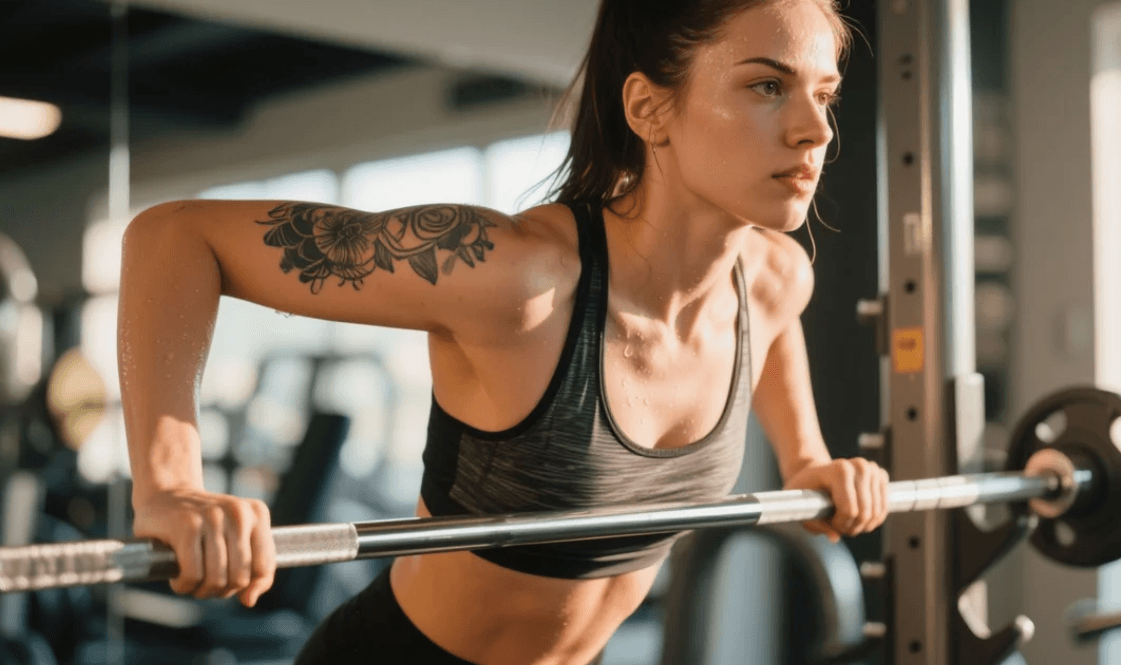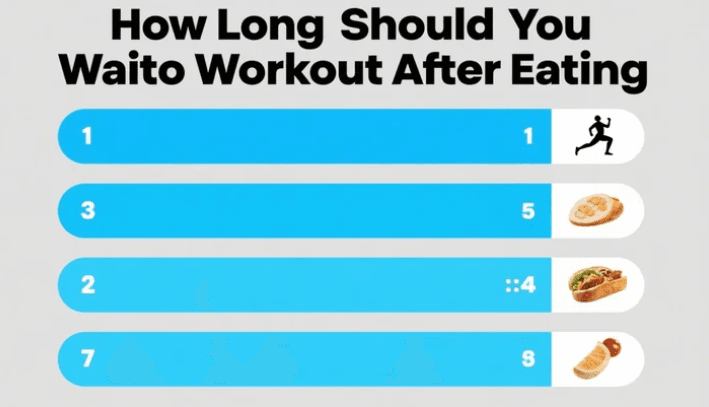How Long Should You Wait to Workout After Eating? Complete Guide to Timing and Performance
Why Timing Matters When Exercising After Eating
Many people wonder, how long should u wait to workout after eating? The timing of your exercise after a meal can significantly impact your performance, digestion, and comfort.
Exercising too soon after eating can cause cramps, nausea, or indigestion, while waiting too long might leave you feeling weak and low on energy.
This article explores the science of digestion, optimal waiting times, and practical tips for different types of exercise.
What Happens to Your Body When You Eat?
When you eat, your digestive system breaks down food into nutrients like glucose, amino acids, and fatty acids. Blood flow is directed to the stomach and intestines to support digestion.
If you immediately start working out, your muscles also demand increased blood flow, creating competition between the digestive system and muscles. This often results in side effects like bloating, heartburn, or cramps.
Understanding how your body processes food helps answer the question: how long should u wait to workout after eating?
General Guidelines for Exercising After Eating
The general rule is:
- Wait 3 to 4 hours after a large meal before intense exercise.
- Wait 1 to 2 hours after a small meal.
- Wait 30 minutes to 1 hour after a light snack.
These guidelines allow your stomach to partially empty, reducing the risk of discomfort while ensuring your body still has available fuel.
How Long to Wait for Different Types of Exercise
Not all workouts stress the body in the same way. The type of activity determines how long you should wait after eating:
1. Cardio (Running, Cycling, Swimming): Wait at least 2–3 hours after a full meal. Cardio is high-impact and jostles the stomach, which increases the likelihood of cramps.
2. Strength Training: Wait 1–2 hours after a balanced meal. Strength workouts require energy but are less jarring to digestion compared to cardio.
3. Light Yoga or Walking: These can be done 30–60 minutes after eating since they are low intensity and may even aid digestion.
4. High-Intensity Interval Training (HIIT): Wait at least 3 hours after a large meal. HIIT requires maximum energy and fast oxygen delivery, making full digestion essential.
Does Meal Size Affect the Waiting Time?
Yes, the size of your meal is one of the most important factors in deciding how long u should wait to workout after eating.
- Large Meals: Containing protein, fat, and fiber, they take longer to digest—about 3 to 4 hours.
- Medium Meals: A balanced plate with carbs and lean protein may take 2 hours.
- Light Snacks: A banana, protein bar, or smoothie digests in about 30–60 minutes.
What About Pre-Workout Snacks?
If you need energy but don’t want to wait too long, a light snack is the best choice. Good options include:
- A piece of fruit with nut butter.
- A small yogurt with berries.
- A slice of whole-grain toast with honey.
- A protein smoothie.
These snacks provide quick-digesting carbohydrates and small amounts of protein, fueling your workout without overwhelming your stomach.
Why Exercising Too Soon After Eating Can Be Harmful
If you don’t wait long enough before exercising, you might experience:
- Stomach cramps or side stitches.
- Acid reflux or heartburn.
- Nausea and bloating.
- Reduced performance due to split energy demand.
- In extreme cases, vomiting.
This is why experts emphasize allowing adequate digestion time before intense activity.
Special Considerations: Morning Workouts
For those who exercise early in the morning, the rules change slightly.
If you work out on an empty stomach (fasted training), your body uses stored glycogen for energy.
If you prefer to eat, opt for a very light snack like a banana or small smoothie and wait 20–30 minutes before starting.
How Age and Health Conditions Affect Timing
Your personal health plays a role in determining how long u should wait to workout after eating. For example:
- People with acid reflux or GERD may need longer waiting times.
- Older adults may digest food more slowly.
- Individuals with diabetes should plan meals carefully to balance blood sugar before exercising.
- Athletes with high-calorie meal plans may rely on frequent snacks rather than large meals to train more efficiently.
Hydration and Its Role
Water is absorbed much faster than food, so staying hydrated before and during workouts is important.
However, avoid drinking excessive amounts immediately before exercise, as this can add to stomach discomfort. Small sips during your workout are the most effective approach.
Signs You Waited Long Enough
So, how do you know if you’ve waited long enough? Look for these signs:
- You feel light and energetic, not heavy or sluggish.
- No noticeable bloating or fullness.
- No acid reflux or burping during movement.
- Smooth, comfortable breathing during warm-up.
Timing Workouts with Daily Schedules
For busy individuals, planning workouts around meals can be tricky. Here are some strategies:
- If you work out during lunch breaks, eat a smaller, lighter meal to shorten digestion time.
- For evening workouts, avoid heavy dinners right before training; instead, have a balanced pre-workout snack.
- For morning athletes, consider eating a light snack pre-workout and a full breakfast afterward.
Conclusion: How Long Should U Wait to Workout After Eating?
The answer depends on meal size, type of exercise, and your personal digestion. In general, wait 3 to 4 hours after a large meal, 1 to 2 hours after a small meal, and 30 to 60 minutes after a snack before working out.
By timing your workouts wisely, you can avoid discomfort, improve performance, and make the most of your training sessions. Listen to your body, adjust based on your energy levels, and you’ll find the perfect balance between fueling and fitness.







BodyWave: Invest in Your Well-being!

